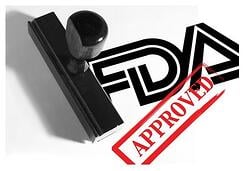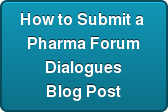By: Clark G. Sullivan and Sujatha Vathyam, Troutman Sanders LLP
A pharmaceutical patent lawsuit against the Food and Drug Administration (“FDA”) earlier this year has clarified when 3-year Hatch-Waxman data exclusivity will prevent the United States Food and Drug Administration (“FDA”) from approving an application filed under section 505(b)(2) of the Food Drug and Cosmetic Act (the “FD&C Act”). In the case, Veloxis Pharmaceuticals, Inc. v. FDA, a United States District Court held that reliance on an earlier approval was not necessary for three year data exclusivity to delay the later filed 505(b)(2) application. Exclusivity arose solely because the later application was for the same drug as the earlier approval and would be approved for the same conditions of use.

A “505(b)(2)” application refers to a new drug application (“NDA”) in which the sponsor has not conducted all of the studies necessary to support FDA approval. Instead, the sponsor relies on studies performed by a third party without the permission or “right of reference” from the third party. The sponsor might rely on studies reported in the literature, studies that supported an earlier approval of the drug by FDA, or studies from any other external source.
A 505(b)(2) application should be contrasted with a 505(b)(1) application, in which the sponsor owns or has a right of reference to all the data supporting the NDA. Unlike the 505(b)(1) application, FDA will under certain circumstances delay its approval of a 505(b)(2) application until the 3-year data exclusivity or new chemical entity (“NCE”) exclusivity of a previously approved drug has expired. In addition, a 505(b)(2) application must comply with the patent certification requirements in section 505(c) of the FD&C Act.
Veloxis involved competing applications for an extended release version of tacrolimus, an immunosuppressant used in kidney transplant patients to prevent transplant rejection. FDA originally approved tacrolimus in a twice-daily immediate release capsule in 1994. In 2013, the FDA approved the first extended release version of the molecule, based on an application filed by Astellas Pharma US, Inc. (“Astellas”). Critical to FDA’s approval were two Astellas studies demonstrating the drug could successfully suppress the immune system in patients who had just received a kidney transplant (“de novo patients”).
Approximately one year after the Astellas approval, Veloxis Pharmaceuticals, Inc. (“Veloxis”) submitted its own New Drug Application (“NDA”) for an extended release version of tacrolimus, based on its own clinical studies for the drug. FDA, however, refused to approve the drug until the expiration of Astellas’ three-year data exclusivity period from the clinical studies it had performed. FDA did, however, propose a compromise. Because Astellas had only studied the treatment of de novo patients, FDA indicated that it would approve the Veloxis NDA for the treatment of patients who were already stabilized on an immunosuppressant regimen, and were being converted to a different regimen (“conversion patients”).

Veloxis refused FDA’s offer and filed a lawsuit against FDA arguing, among other things, that Astellas’ data exclusivity did not bar its application because Veloxis’ NDA did not rely on Astellas’ clinical studies. Veloxis argued that reliance was an essential requirement for new data exclusivity to arise. The court, however, sided with FDA, and found that reliance was not needed for new data exclusivity to apply. Exclusivity arose solely because Veloxis’ application was filed under section 505(b)(2), and Veloxis was seeking approval for the same “conditions of use” in de novo patients that Astellas’ clinical studies had supported. Veloxis could secure approval for other conditions of use, including the conversion patients FDA had proposed, but Astellas’ data exclusivity prevented FDA from approving Veloxis’ NDA for de novo patients for three years from Astellas’ approval.
Sponsors of new drugs plainly wish to simplify the development process as much as possible. Section 505(b)(2) allows drug companies to avoid duplicative time consuming clinical and pre-clinical investigations by relying on data generated by third parties. The Veloxis decision gives drug developers valuable insight and FDA guidance when choosing data to rely on in their 505(b)(2) applications, and the ramifications of such reliance.
Read More about Hatch-Waxman litigation
About the Authors:
 |
|
Clark G. Sullivan Partner, Troutman Sanders LLP |
 |
|
Sujatha Vathyam Associate, Troutman Sanders LLP |
Sujatha Vathyam, Ph.D., focuses her practice representing clients in the preparation and prosecution of patent applications, particularly in the area of pharmaceuticals, chemicals, cosmetics, biotechnology and food sciences. Dr. Vathyam ’s practice also includes client counseling, conducting infringement and validity analyses, drafting intellectual property licensing and joint development agreements and conducting intellectual property due diligence in connection with mergers and acquisitions. Prior to launching her legal career, Dr. Vathyam was a research chemist as well as a negotiator involved in complex transactions, which often revolved around patent licenses and sales, divestitures, joint developments, and technology licenses with both U.S. and international companies.


